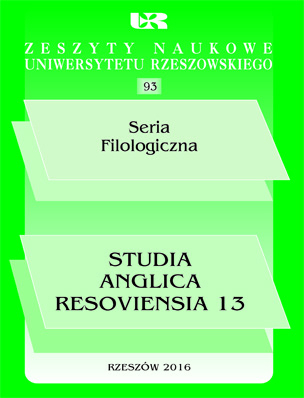The semantic history of dough, bread, bun: on how money and women go together
DOI:
https://doi.org/10.15584/sar.2016.13.4Keywords:
diachronic semantic change, metaphor, foodsemy, female human being, female body partsAbstract
In recent literature scholars have worked out a number of new categories of meaning development, such as zoosemy, plantosemy and fooodsemy. In my paper I shall focus on the mechanism of foodsemy, a new semantic category proposed by Kleparski (2008). Most frequently, the process discussed here involves projection of attributive features and values, sometimes positive, yet most frequently negative, associated with members of the macrocategory FOODSTUFFS onto the macrocategory HUMAN BEING. Interestingly enough, numerous food and food-related lexical items are employed to conceptualize and encode the senses related to the macrocategory FEMALE HUMAN BEING. Additionally, one may also distinguish cases of shift in which metaphorical transfers link the conceptual macrocategory FOODSTUFFS and other conceptual categories, such as FEMALE BODY PARTS and MONEY. To illustrate complexity of foodsemy, I shall analyse the three cases of lexical items, such as dough, bread and bun that have undergone different metaphorisation processes.Downloads
Download data is not yet available.
Downloads
Published
2016-12-15
How to Cite
Kowalczyk, A. (2016). The semantic history of dough, bread, bun: on how money and women go together. Studia Anglica Resoviensia, 13, 34–43. https://doi.org/10.15584/sar.2016.13.4
Issue
Section
Articles
License
Copyright (c) 2016 Studia Anglica Resoviensia

This work is licensed under a Creative Commons Attribution-NonCommercial 4.0 International License.

